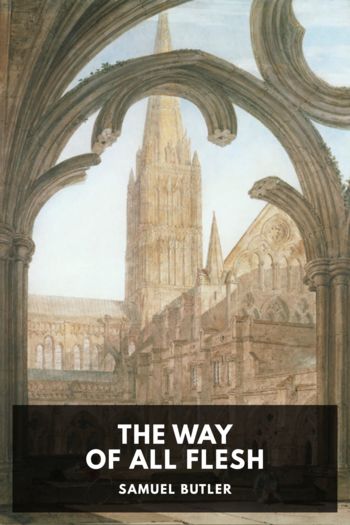Erewhon - Samuel Butler (general ebook reader .txt) 📗

- Author: Samuel Butler
Book online «Erewhon - Samuel Butler (general ebook reader .txt) 📗». Author Samuel Butler
“It is possible that the system when developed may be in many cases a vicarious thing. Certain classes of machines may be alone fertile, while the rest discharge other functions in the mechanical system, just as the great majority of ants and bees have nothing to do with the continuation of their species, but get food and store it, without thought of breeding. One cannot expect the parallel to be complete or nearly so; certainly not now, and probably never; but is there not enough analogy existing at the present moment, to make us feel seriously uneasy about the future, and to render it our duty to check the evil while we can still do so? Machines can within certain limits beget machines of any class, no matter how different to themselves. Every class of machines will probably have its special mechanical breeders, and all the higher ones will owe their existence to a large number of parents and not to two only.
“We are misled by considering any complicated machine as a single thing; in truth it is a city or society, each member of which was bred truly after its kind. We see a machine as a whole, we call it by a name and individualise it; we look at our own limbs, and know that the combination forms an individual which springs from a single centre of reproductive action; we therefore assume that there can be no reproductive action which does not arise from a single centre; but this assumption is unscientific, and the bare fact that no vapour-engine was ever made entirely by another, or two others, of its own kind, is not sufficient to warrant us in saying that vapour-engines have no reproductive system. The truth is that each part of every vapour-engine is bred by its own special breeders, whose function it is to breed that part, and that only, while the combination of the parts into a whole forms another department of the mechanical reproductive system, which is at present exceedingly complex and difficult to see in its entirety.
“Complex now, but how much simpler and more intelligibly organised may it not become in another hundred thousand years? or in twenty thousand? For man at present believes that his interest lies in that direction; he spends an incalculable amount of labour and time and thought in making machines breed always better and better; he has already succeeded in effecting much that at one time appeared impossible, and there seem no limits to the results of accumulated improvements if they are allowed to descend with modification from generation to generation. It must always be remembered that man’s body is what it is through having been moulded into its present shape by the chances and changes of many millions of years, but that his organisation never advanced with anything like the rapidity with which that of the machines is advancing. This is the most alarming feature in the case, and I must be pardoned for insisting on it so frequently.”
XXV The Machines—ConcludedHere followed a very long and untranslatable digression about the different races and families of the then existing machines. The writer attempted to support his theory by pointing out the similarities existing between many machines of a widely different character, which served to show descent from a common ancestor. He divided machines into their genera, subgenera, species, varieties, subvarieties, and so forth. He proved the existence of connecting links between machines that seemed to have very little in common, and showed that many more such links had existed, but had now perished. He pointed out tendencies to reversion, and the presence of rudimentary organs which existed in many machines feebly developed and perfectly useless, yet serving to mark descent from an ancestor to whom the function was actually useful.
I left the translation of this part of the treatise, which, by the way, was far longer than all that I have given here, for a later opportunity. Unfortunately, I left Erewhon before I could return to the subject; and though I saved my translation and other papers at the hazard of my life, I was a obliged to sacrifice the original work. It went to my heart to do so; but I thus gained ten minutes of invaluable time, without which both Arowhena and myself must have certainly perished.
I remember one incident which bears upon this part of the treatise. The gentleman who gave it to me had asked to see my tobacco-pipe; he examined it carefully, and when he came to the little protuberance at the bottom of the bowl he seemed much delighted, and exclaimed that it must be rudimentary. I asked him what he meant.
“Sir,” he answered, “this organ is identical with the rim at the bottom of a cup; it is but another form of the same function. Its purpose must have been to keep the heat of the pipe from marking the table upon which it rested. You would find, if you were to look up the history of tobacco-pipes, that in early specimens this protuberance was of a different shape to what it is





Comments (0)